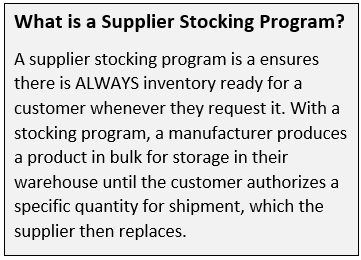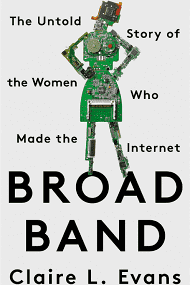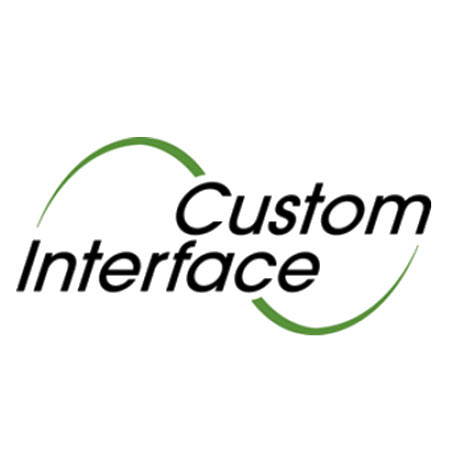Supply Chain Solutions: Simplifying Your Supply Chain and Mitigating Risks
Supply chain disruption has been a major challenge for manufacturers over the past several years,...
CALL: (509) 493-8756
-----------
SUBSCRIBE TO OUR BLOG >> | SURPLUS INVENTORY >>

While many think of JIT as solely how a manufacturing facility manages external material supply to reduce on-site inventory or material shortages, JIT has many aspects that are not about supply chain management.
Monitoring work areas to organize tools and materials to minimize the times and distance workers travel to complete their work, workforce skill diversification, identifying optimal batch sizes and reducing wait times for inspections are all example of JIT principles.
When demand for our services dropped due to COVID’s effect on our largest market, aerospace, we reduced operating costs by making improvements to the way we organize our manufacturing processes and redeployed staff toward implementing a new ERP system.
To maintain our position as a preferred supplier for our clients, we are now deploying non-JIT strategies in this aspect of JIT. We added additional administrative staff who call to confirm delivery dates for all materials scheduled to arrive within 2 weeks. While this would be categorized as waste in JIT terms, it allows us to be proactive in adjusting manufacturing schedules or proactively providing customers with revised delivery dates when factory delivery dates aren’t going to be met.
We also deployed both on-site and supplier stocking programs to protect our clients from out-of-stock conditions for Commercial off–the-Shelf (COTS) items. The added buying power has also helped to offset some material cost increases.
Custom Interface has also increased the number of weeks it is holding material to ensure we have adequate supply to keep our workforce at full capacity.
But it has become challenging to support JIT practices in the area of management of external material supply. Factories have not yet ramped to pre-COVID capacities, which is lengthening factory lead times, causing unexpected late deliveries or cancellations, and increasing material costs.
While the supply chain is more seriously impacted by JIT, there is a tot more to JIT than supply chain management. We don’t believe we can continue to manage the inflow in the same way, so we customize the process.
For instance, a year ago, we would bring materials in two weeks ahead. Now we bring in materials at least four weeks ahead AND have to make continual call to confirm materials are going to be delivered for each project since delays/changes are not announced.
It can go unsaid that pricing volatility and long lead times are currently causing a bit of chaos. It is difficult to make a commitment to customers about when products will be available and the price.
The best method to avoid running out of stock and meeting price commitment is by taking advantage of a stocking package.
Distributors rather than manufacturers typically work with customers to develop stocking packages.
 Stocking program considerations:
Stocking program considerations:
A continual supply – the sourcing company continuously replaces delivered products.
Inventory can be specific to project or build – and work as a non-replenished or replenished agreement.
The supplier provides a pipeline of materials based on a short-term projection.
Custom Interface can carry inventory for customer.
Supplier has limited inventory in addition to inventory at Customer Interface.
Supplier has a limited order with manufacturer.
Note: Contract/agreement will include: ‘customer is responsible for purchasing the amount – no longer than 18 months.’
Even after tightening a nut on a coax cable to the manufacturer’s torque specification, it would not stay tight. Testing validated a 30% fail rate. To avoid unnecessary waste CII posed the key question, “Would you accept an equivalent?”
6.5 miles of cable were ordered – with a spec that is tested. The only company that manufactures the cable had issues with the testing and couldn’t ship the orders. This was discovered very late in the manufacturing process. The Custom Interface team sourced another option which then required a change with drawings. (Which we facilitated.) An equivalent was sourced, drawings updated, and the project did not stall waiting for a coax cable. We understand wire/cable – and can offer options to “get it now” vs waiting for availability.
GET SMART - Go beyond a part number and use specific descriptors vs short cutting with proprietary manufacturer part number. This is where the team at Custom Interface excels as they are aware of potential equivalents from multiple sources.
… is more important than ever. Planning and ordering ahead is an additional investment but the payoff is big. Factories are also short-staffed and making attempts to employ more to their workforce.
25 years ago, my shoulder became half shorter because we didn’t have the internet. The telephone was on the shoulder to connect one-to-one.
Despite the current political circumstances, we continue to see international manufacturers of electronic materials move factories offshore.
Instead of onshoring – they are shifting from one country to another – not to USA. The risk factor of supplies will increase.
Long term – if you have a choice, buy in the USA. We encourage our customers buyers to look for US sourced materials whenever possible, in order to protect themselves from the effects of political forces.
Tariffs have made international procurement more expensive and as third world countries improve their living standards, the difference in cost between offshore sources and US made products is falling. When the risks of political forces are recognized- the choice to buy on-shore may become even more attractive.
If the US wants to protect its future and avoid an international crisis, develop onshore sources for industries that are critical to our quality of life and future. i.e., EV battery, solar panels, etc. It is critical to reward companies for making decisions to onshore manufacturing, to nourish factories.

While staff would love robotics for some jobs, the government invests in training and development much more than in equipment. The next step will be to retrain the workforce to support/maintain/operate the robotics.
The book “Broad Band” by Claire L. Evans is a fascinating story about how “computers” were people and how the term transitioned to equipment. Those who did the computing transitioned to computer programmers. “Broad Band” is a fascinating read and highly recommended.
Just as it was smart to move to the electronic computer in the 1940’s, Investing in robotics is a good move if we are not displacing workforce. It is already happening and will be an invisible transition that most won’t realize.
If you are interested in a stocking package, be sure contact us here.

Nancy White is the CEO and co-owner of Custom Interface. Custom Interface Inc. is certified under the AS9100D ISO9001:2008 quality systems and still provides services to its first client with a dedication to employees, customers, and suppliers. Nancy has over 28 years of experience as an owner/officer in the business of contract manufacturing of electronic sub-assemblies, primarily cable assemblies, integration, and box builds. She has volunteered for think tanks, technical advisory committees, community, and economic development councils.

Supply chain disruption has been a major challenge for manufacturers over the past several years,...

Since 2001, Pacific Northwest Aerospace Alliance has been promoting the growth and success of the...
Leave a Comment